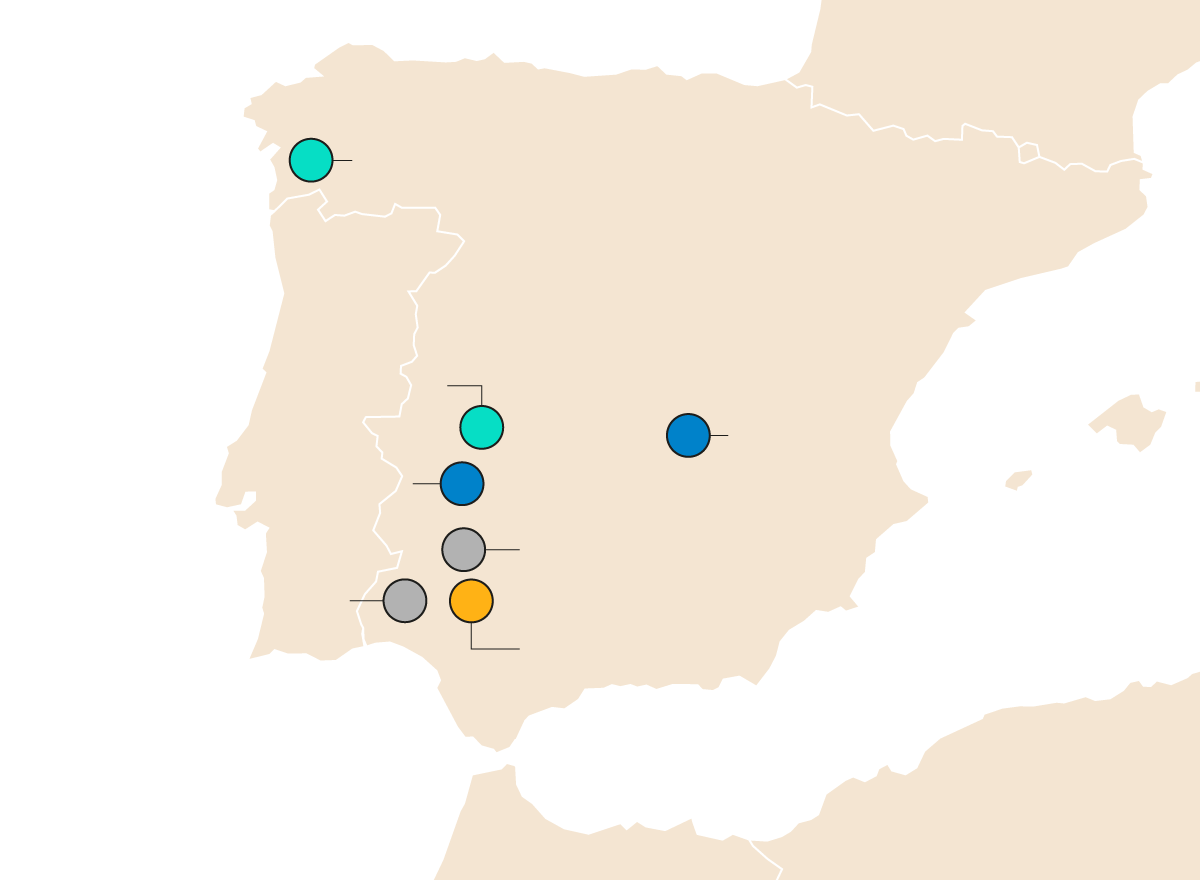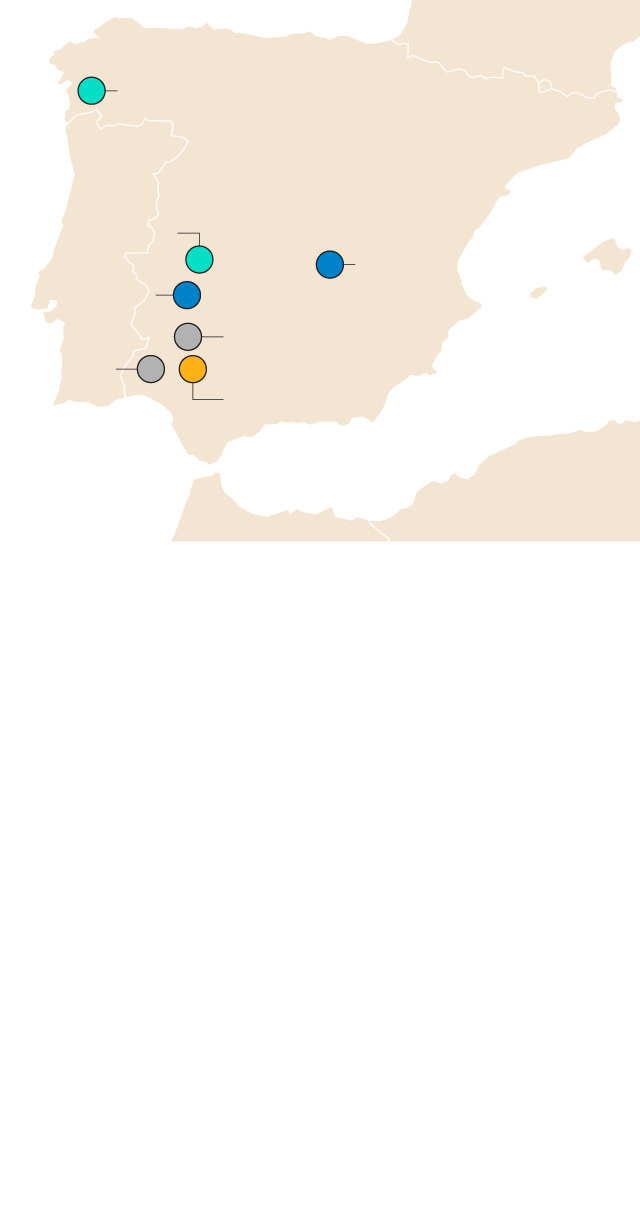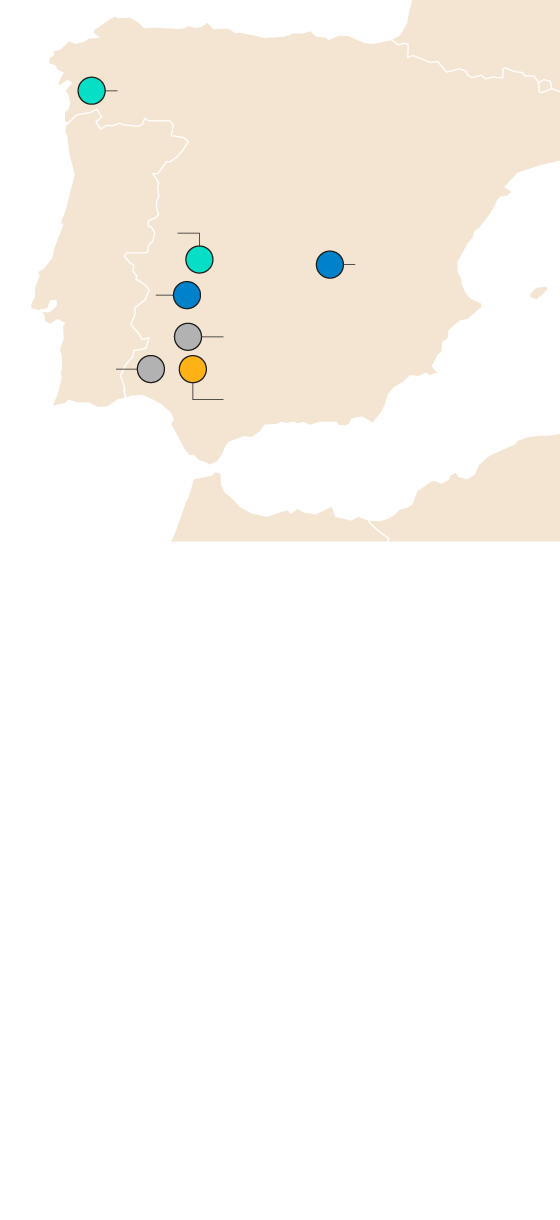The Spanish map of rare earths
Catalonia is one of the areas that, for now, escapes the identification of strategic zones that Europe has made.


MadridWindmills for wind energy production, electric car batteries, or compact electronic devices like GPS devices. These are examples of technologies that require a critical mineral to function. Although these raw materials have been highly valued for years, the spotlight has recently returned to them.
The European Commission, in the midst of the push for the so-called "strategic autonomy", has just launched a plan to try to obtain it and not depend on third countries—China is the global master of these materials. This means opening the door to the return of mining, or at least to its expansion. But first, Europe wanted to know where to start, and Spain was among the countries singled out. Brussels has identified up to seven "strategic projects" in which some type of critical or fundamental mineral could be extracted, recycled, processed, or integrated. They are located in Extremadura, Galicia, Andalusia, and Castilla-La Mancha, and contain lithium, copper, nickel, cobalt, and tungsten. However, the map of mining production in the State is much broader.
Let's take it one step at a time. The State's potential for critical minerals and rare earths (deposits containing up to 17 of these minerals) is among the highest in the Old Continent. In fact, historically, Spain has been rich in the location of mineral raw materials. There are currently around 2,700 active mining operations across Spain: 10 metal mines, 165 industrial mineral operations, 439 ornamental rock quarries, and around 2,100 aggregate or granulate operations, according to data from the Ministry of Ecological Transition. In Catalonia, in 2022, hydrocarbons, potash, industrial rocks, and chalk or limestone accounted for 9.6% of the value of mining production in the country, as can be seen in the accompanying map. In total, the sector handles 210 million tons of minerals annually across the country, according to the Ministry's latest report.
Now, if we focus on critical minerals and rare earths, the map narrows down to the western and southern parts of the state, especially in the area known as the Iberian Pyrite Belt. In fact, This is where Brussels has located six of the seven strategic projects"It's an area that, due to the geological formation of the terrain, has always accumulated a series of highly valued metals," explains Adriana Espinosa, head of natural resources at the organization Amigues de la Terra. For now, Catalonia is not under the European spotlight when it comes to these precious raw materials. This doesn't mean it's a poor territory when it comes to locating minerals, but most of the minerals extracted are aggregates and are primarily used in construction. Potash mining is also notable in the Bages region, in towns like Súria or, until recently, Sallent, and in the quarries in the Garraf region.
Today, Spain produces critical or fundamental minerals such as strontium, fluorspar, tantalum, silicon, and tungsten, as revealed by the latest mineral raw materials roadmap prepared by the Spanish government. Deposits of antimony, barite, bismuth, cobalt, lithium, and rare earths were also identified. "A significant amount of these resources were identified during exploration campaigns carried out in the 1970s and 1980s or are associated with historical exploitation," explains the Ministry of Ecological Transition. In this context, the Spanish government has decided to initiate the process of developing a mineral raw materials action plan for the period 2025-2029, the first to be developed under a democratic government.
Although many countries have specific classifications of what can and cannot be considered a critical mineral, there is no universally accepted definition. "The assessment of their criticality changes depending on economic, geopolitical, and technological factors," noted the International Renewable Energy Agency in a 2023 report. The international organization, for example, also focuses on how the growing demand for these minerals to achieve the objectives linked to the energy transition can transform.
But this is questioned by some environmental and ecological organizations. "We question being thrown into a mining boom without first knowing what calculations have been made about which minerals are needed and for what," Espinosa reflects in the ARA. "It's putting the cart before the horse," he adds. He also criticizes the fact that insufficient measures are being considered to reduce their demand.
Beyond extraction
However, most of the projects Brussels has identified in the country are extractive, but the procedures surrounding the extraction of critical minerals go much further: they must also be processed and refined before their final use. "The Peninsula becomes a sacrifice zone because everyone knows that mining is the part of the chain with the lowest added value. It leaves very little wealth for the autonomous communities, in addition to being highly polluting," says Espinosa. For now, China clearly dominates the game in this regard, something that is also linked to lax environmental regulations. For example, in critical minerals such as dysprosis, essential for wind turbines, the Asian country accounts for 100% of the refined supply. It also accounts for 70% of cobalt refining and almost 60% in the cases of lithium and manganese.



